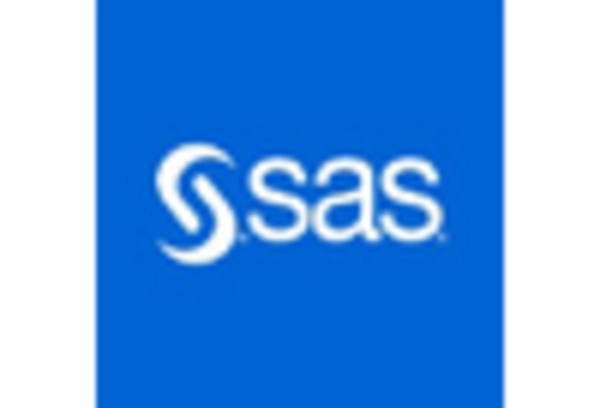Expansion of Social Media Platforms
The proliferation of social media platforms has significantly impacted the sentiment analytics market. As users increasingly share their thoughts and experiences online, businesses are leveraging sentiment analysis to monitor brand reputation and consumer sentiment in real-time. This trend is particularly pronounced in the US, where social media usage is among the highest globally. Companies are utilizing sentiment analytics tools to analyze vast amounts of data generated on platforms like Twitter, Facebook, and Instagram. This enables them to respond swiftly to customer feedback and adapt their strategies accordingly. The sentiment analytics market is thus witnessing a transformation, as organizations seek to harness the power of social media data to drive engagement and improve customer satisfaction.
Increased Focus on Brand Management
The sentiment analytics market is witnessing an increased focus on brand management as organizations strive to maintain a positive public image. Companies are utilizing sentiment analysis to gauge public perception and identify potential issues before they escalate. This proactive approach is essential in today's fast-paced digital environment, where negative sentiment can spread rapidly through social media. By employing sentiment analytics tools, businesses can monitor brand sentiment and adjust their marketing strategies accordingly. The sentiment analytics market is thus becoming integral to brand management efforts, as organizations seek to build and sustain trust with their customers, ultimately leading to enhanced brand loyalty and market share.
Rising Demand for Customer Insights
The sentiment analytics market is experiencing a notable surge in demand for customer insights. Businesses are increasingly recognizing the value of understanding consumer emotions and opinions to enhance their products and services. This trend is driven by the need for personalized marketing strategies, which can lead to improved customer engagement and loyalty. According to recent estimates, the market is projected to grow at a CAGR of approximately 20% over the next five years. Companies are investing in sentiment analytics tools to gain a competitive edge, as these insights can inform decision-making processes and drive revenue growth. The sentiment analytics market is thus becoming a critical component of strategic planning for organizations aiming to thrive in a competitive landscape.
Advancements in Natural Language Processing
Advancements in natural language processing (NLP) technologies are playing a pivotal role in the growth of the sentiment analytics market. These innovations enable more accurate interpretation of human emotions expressed in text, allowing businesses to derive deeper insights from customer feedback. As NLP algorithms become more sophisticated, the ability to analyze sentiment in various contexts, including sarcasm and nuanced language, improves significantly. This is particularly relevant in the US market, where diverse linguistic expressions are prevalent. The sentiment analytics market is thus benefiting from these technological advancements, as companies can now make more informed decisions based on precise sentiment analysis, ultimately enhancing their customer engagement strategies.
Integration of Sentiment Analytics in Business Intelligence
The integration of sentiment analytics into broader business intelligence frameworks is emerging as a key driver for the sentiment analytics market. Organizations are increasingly recognizing the importance of combining sentiment data with traditional business metrics to gain a holistic view of performance. This integration allows for more informed decision-making, as companies can correlate customer sentiment with sales trends and operational efficiency. In the US, businesses are investing in advanced analytics platforms that incorporate sentiment analysis, enabling them to derive actionable insights from diverse data sources. The sentiment analytics market is thus evolving, as organizations seek to leverage comprehensive data analysis to enhance their strategic initiatives and drive growth.

















Leave a Comment